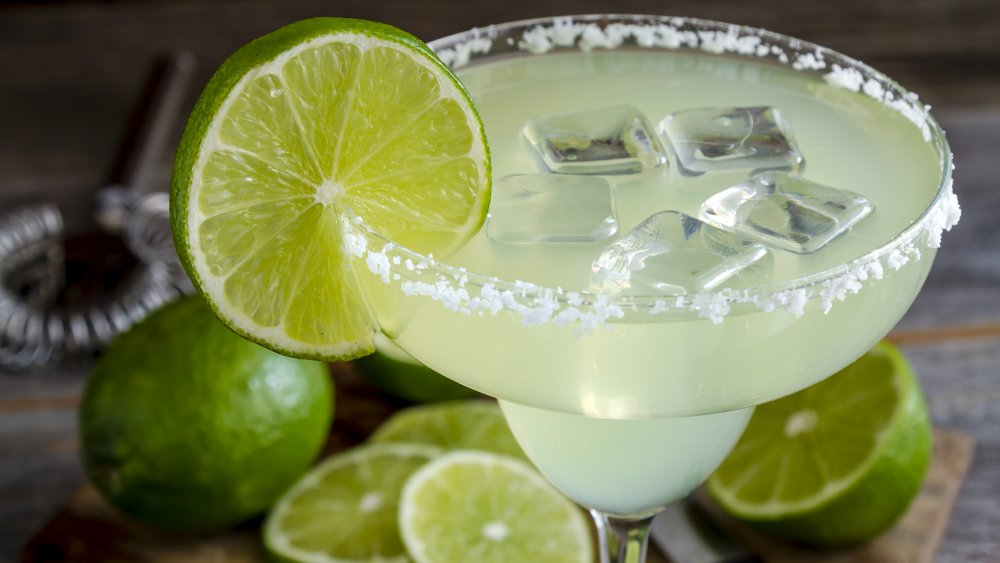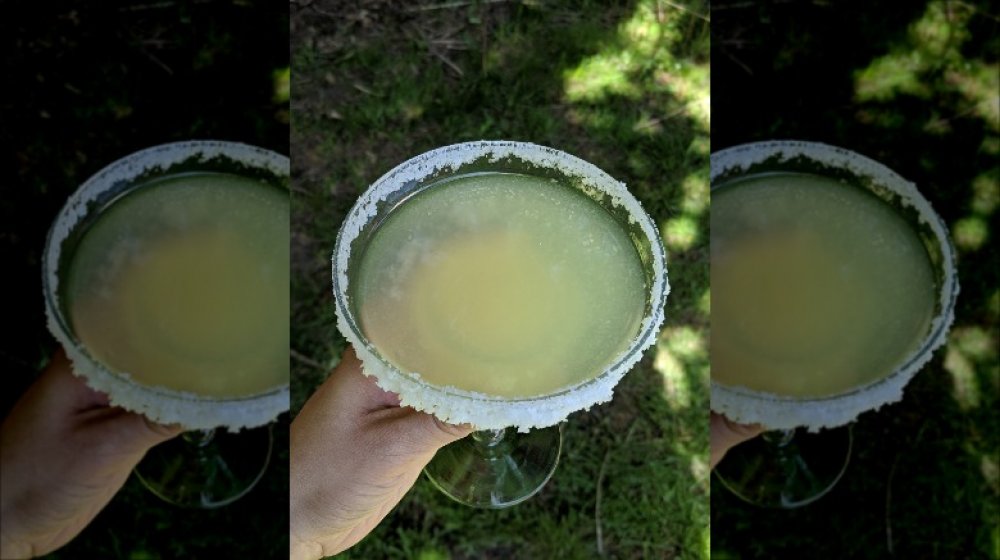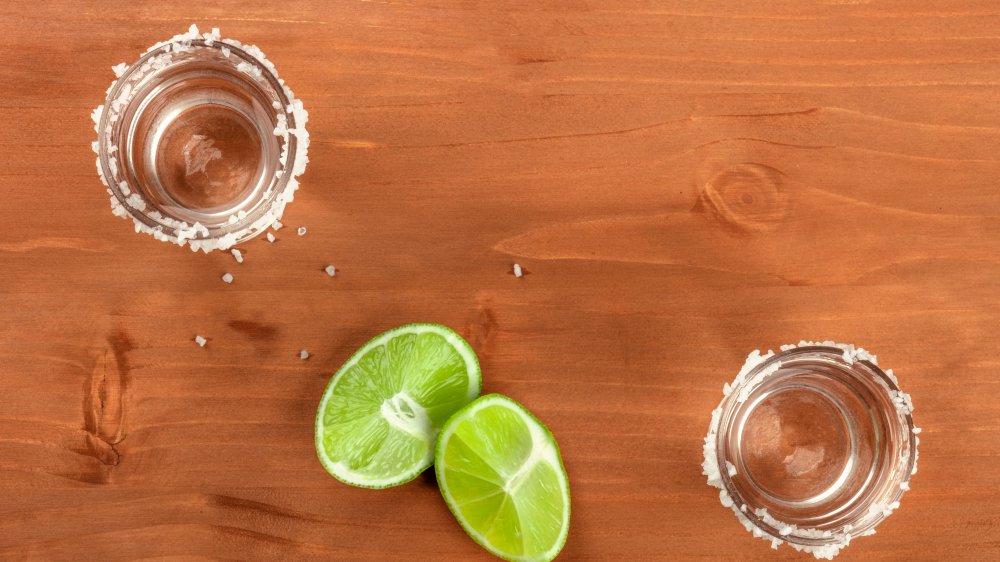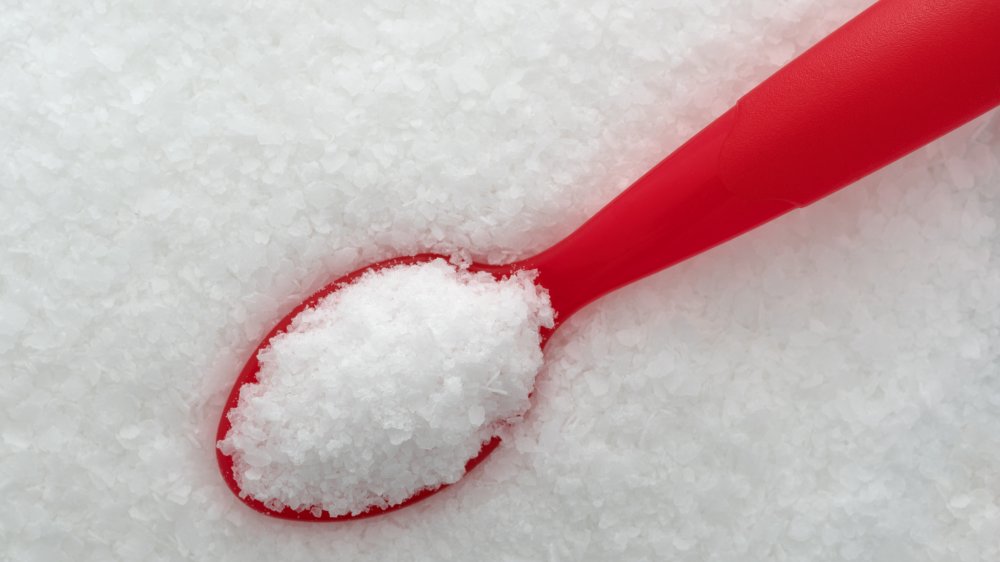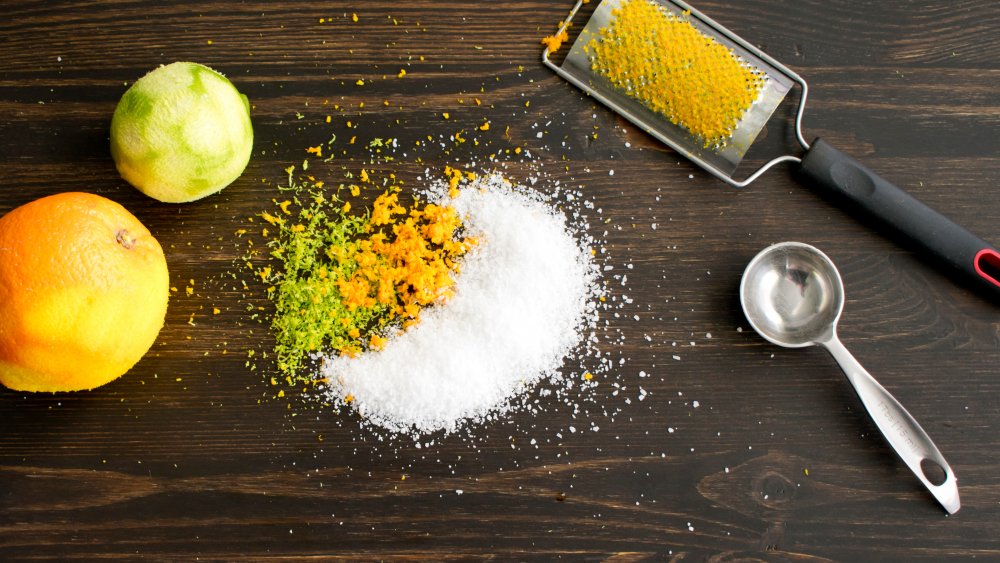The Real Reason A Margarita Has A Salted Rim
If you ever order a margarita in a bar or restaurant, chances are you're going to be asked two questions: frozen or on the rocks? Salt or no salt? While we're not going to get into the whole debate about whether frozen margaritas are authentic or not (and staying far away from the whole issue of flavored margaritas), you should, unless you're on a strict low-sodium diet, always say yes when asked if you want a margarita with a salted rim.
Why should you do this? Because the salt is actually a fundamental, flavor-boosting part of this classic drink.
What salt does for a margarita
While the origin story of the margarita cocktail is a bit unclear, its original ingredients have remained pretty consistent — tequila, orange liqueur, citrus juice (lemon or lime) and a salted rim (via Thrillist). Yes, the salted rim was part of the very first margarita recipes, and for a good reason — the sodium ion in the salt molecule has the effect of dampening bitter tastes. What this means for your margarita is that a salted rim helps to counteract any bitterness from the orange liqueur or the tequila, which, in turn, enhances both the drink's sweet and sour notes.
What's more, the taste of salt somehow enhances our sense of smell, which makes the cocktail seem to have a more powerful taste. Salt also increases the flow of saliva, making the margarita quite literally mouthwatering. Mental Floss explains that salt even has the ability to soften the tequila's sometimes harsh bite — which means, if you're ordering a margarita made with bottom shelf tequila, you definitely shouldn't skip the salt.
How to salt your margarita rim
Although you can purchase fancy glass-rimming kits, The Cookful assures us that these really aren't necessary. In order to salt a margarita rim properly, all you're really going to need is a dish, some salt, a lime, and a knife. Oh, and a glass, of course. A margarita glass if you've got one, or any cocktail glass or even a wine glass will do in a pinch.
Next, cut your lime into quarters, then take one of the quarters and cut a notch in the middle. Place the notched lime on the rim of the glass, and run it all the way around, making that rim nice and juicy. Then, pour some salt into the dish (which should have a larger diameter than the glass), and dip the glass into the salt. Twist it around until there's salt sticking to all of the lime juice, all around the rim of the glass.
If you prefer not to have any salt on the inside of your glass rim, you can use the above method, but make sure to dip your glass into the salt at an angle and roll it around so that only the outside rim touches the salt. And should you be making margaritas for a crowd, perhaps pre-salting the rims of a large number of glasses preparatory to pouring margaritas from a pitcher — well, in that case, you can skip the lime wedges and just juice a couple of limes to use for rim-dipping.
What kind of salt should you use for your margarita?
The Cookful conducted a taste test using three types of commonly-available salt to rim three different margarita glasses. The least satisfying results were achieved with table salt, which didn't look too pretty, clumped up badly, and resulted in a margarita with an overwhelmingly salty taste. Verdict: skip this stuff.
The very best results, in appearance as well as flavor, came from using flaky sea salt, but this type of salt can be pretty pricey. Since glass-rimming is a process that tends to waste a lot of salt, The Cookful bloggers decided that it wasn't worth using flaky sea salt on a regular basis for this. The overall winner, with results that looked and tasted almost as good as sea salt for a fraction of the price, was good old kosher salt, which just so happens to be the kind that most margarita recipes call for.
Pimp out your salted rim
If you really want to fancy up your margarita, you can experiment with using a flavored salt to garnish the glass rim. Punch supplies several chef-created salt recipes, including one with grapefruit zest, fennel, and minced habanero and another with crushed plantain chips and taco seasoning.
Betty Crocker offers a slightly more conventional recipe calling for powdered ancho and chipotle chiles, while Supercall showcases flavored margarita salts made with sriracha, dried blueberries, or lemon zest and rosemary. You could even, if you must, jump on the unicorn food trend (just a few years after the vanguard) by using food coloring to dye your margarita salt in pretty pastel colors. Get as creative as you like, as long as you keep the salt. It's not just there for decoration — salt really is an integral part of the whole margarita experience.
